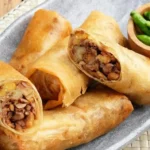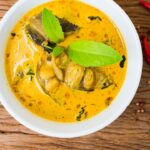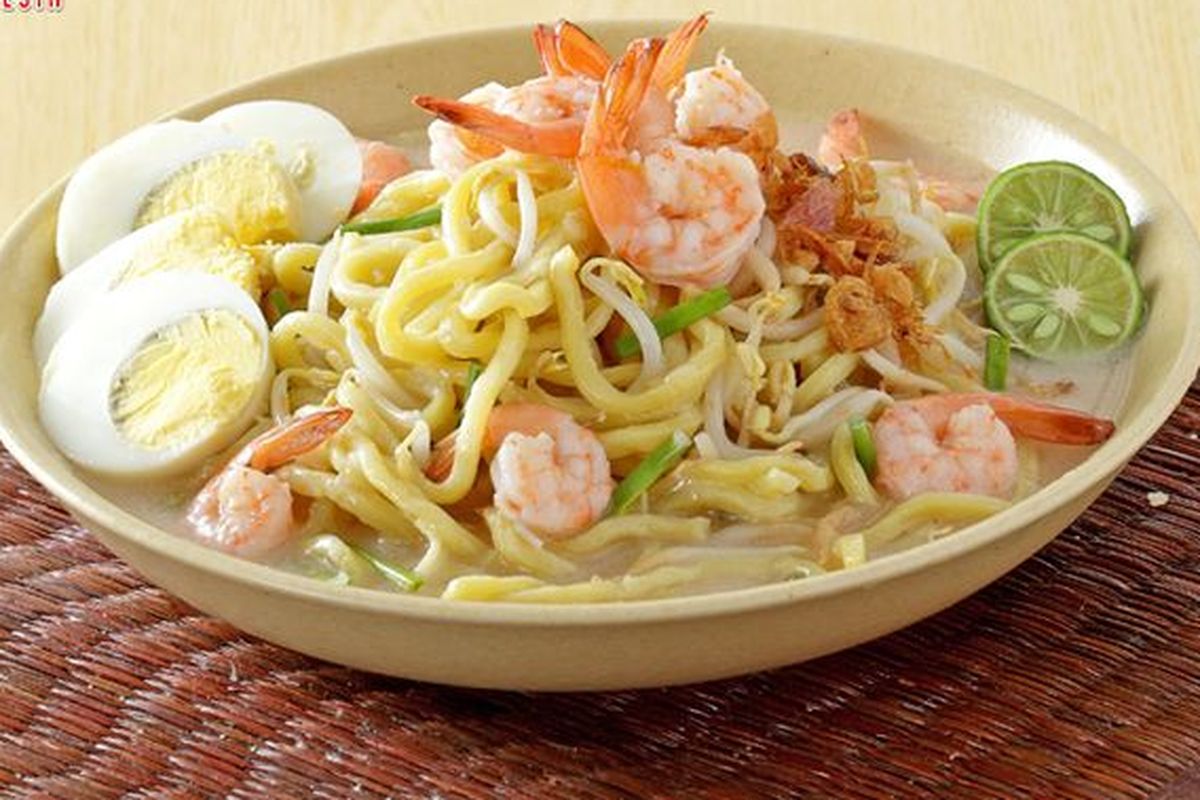Although the old saying that “a bad workman blames his tools” carries a lot of truth, the reality is that the tools we use still matter…a lot.
Of course, the workman—or in the kitchen, the chef—needs to know which tools to use and when to use them. The right knife, the right ingredients, or the proper glass can all make a big difference. Even the best chef would run into a world of difficulty trying to make a proper soufflé in a frying pan rather than a ramekin.
And when cooking, you also want to use cookware made of the right materials for the job. Different metals heat and cool differently, react with acids, or are simply heavier to move. Read on to find out more about common cookware materials and how to choose the right one for every job.
Choosing the Right Cookware Material
When considering materials, think about what you’re cooking as well as its presentation. For example, a multi-course meal with items to be seared or broiled calls for different cookware than a casserole you’ll bring to a friend’s house.
Some factors to consider include:
- Heat distribution. Some materials tend to distribute heat more evenly—cast iron, because it heats more slowly, is chief among them—while others are more prone to marked hot and cold spots. These spots, where a pan heats up faster or slower than other areas, typically depend upon the material itself as well as the heat source. If you’re cooking a sauce over a gas flame, you might notice bubbles first show up over the ring where the flame is.
- Reactivity. You want to be mindful of whether the material reacts with acidic foods. Reactive cookware like copper, iron, or aluminum has a chemical reaction to certain foods and can impart a metallic taste or change the colors.
- Compatibility with induction stovetops. Instead of the cooktop itself heating up and then heating the pan, induction cooktops use an electromagnetic field that causes only the pan to heat up. Your pan needs some iron in it to make that happen, so certain cookware won’t work with induction stovetops.
- Color and coating. Pay attention to the color and coating on pots, pans, baking dishes, and cookie sheets. Dark-colored cookie sheets will likely need less cooking time, and different coatings can require different cooking methods.
Now on to the most common materials!
Stainless Steel
Pros
- Light material
- Easy to handle and use
- Can be affordable
Cons
- Food can stick to it, making cleanup a pain
Stainless steel is a non-porous, durable material with a good lifespan that is rust- and scratch-resistant. It is non-reactive, so it’s a good material for sauce tomat and other acidic dishes. And because it contains iron, it works well with induction cooktops. (If your stainless steel pans are aluminum-clad, double-check that it has a steel layer on the bottom that makes it compatible with induction stovetops.)
Stainless steel can be used in the oven or broiler in addition to a stovetop and is good for dishes that need to cook at high temperatures, like a braise, sauce, sear, or saute. It is usually advertised as dishwasher safe, though washing by hand is usually the best way to maintain your cookware; a cleaner like Bar Keepers Friend, aka BKF, works well on stainless steel.
The Leidenfrost Effect: Making Stainless Steel a Non-Stick Option
Believe it or not, your stainless steel pans can be as effective as a non-stick pan with a little patience and practice, thanks to the Leidenfrost effect. Heat the pan over medium heat for a few minutes, then drop a small amount of water into it. If the water sizzles and evaporates, the pan isn’t ready. You want the water to bead up and roll around the pan. Use a cloth to remove the beaded water, then add the oil; cook your food before the oil starts to smoke.
It also helps if the food you add to the pan is at room temperature, so it doesn’t cool the pan down.
Because it is not a good heat conductor on its own, stainless steel is often combined with other materials; pans with aluminum or copper cores tend to offer better heat induction, though they’ll also cost more. You’ll generally find 3-ply and 5-ply options, which refers to how many layers of metal the pan has; these usually include an aluminum or copper core.
As a general rule of thumb, 3-ply pans are lighter and less expensive than 5-ply; 5-ply cooks more evenly, but it’s heavier and more expensive. Results can vary by brand, which makes the choice a matter of budget and personal preference.

Because it’s non-reactive, Stainless steel is good for dishes that are acidic.
Aluminum
Pros
Cons
- Not compatible with induction cooktops
- Can scratch or warp
- Highly reactive
Aluminum pans have excellent thermal conductivity and are usually lightweight—lighter than stainless steel—and inexpensive. They heat and cool quickly and distribute heat evenly.
They’re good for cookies and muffins and can be a good surface to use on a grill when making fish or vegetables.
Aluminum is highly reactive so it’s not good for acidic foods, and it is also prone to warping and scratching. For that reason, aluminum usually isn’t used solo but is instead layered with other materials and/or treated to make it more durable.
Anodized aluminum
Because of the aforementioned drawbacks to aluminum—namely, that it can warp and scratch easily—you might opt for anodized aluminum. This material is treated using a process that hardens it and makes it more durable. Anodized aluminum is the result of a chemical process, not a coating, so the material doesn’t chip or peel.
Anodized aluminum takes longer to heat but remains a great conductor, better than stainless steel. It is scratch-resistant.
Carbon Steel
Pros
- Handles high temperatures
- Can go in oven
- Durable/lasts a long time
Cons
- Hand wash only
- Can burn food because heats so quickly
- Some need to be seasoned
- Reactive
Carbon steel is a combination of iron and carbon. It’s similar to cast iron but thinner and lighter; it heats quickly, cooks evenly, and is highly durable, making it a favorite in the restaurant industry. It can handle high temperatures and can go into the oven. Carbon steel cookware is good for meats and vegetables, for searing, and for making sauces—but not tomato sauce, as it’s reactive.
Cast Iron
Pros
- Durable
- Typically inexpensive
- Can withstand changes in temperatures
- Compatible with induction cooktops
Cons
- Heavy
- Can rust
- Takes a while to heat up
- Needs to be seasoned regularly
- Need to clean as soon as it’s cool
- Reactive
Cast iron is a mixture of iron and carbon. It is usually inexpensive, durable, and naturally non-stick if seasoned properly. It is slower to bring to heat than other materials but it distributes heat evenly and retains heat well. It also imparts iron to food (a plus for some people). It’s often used in pans, dutch ovens, and griddles.
Cast iron is excellent for shallow frying, baking, searing, and skillets; it’s great for camping trips because it can be used over an open flame. At home, you can cook something on the stovetop and then put it into the oven to crisp or brown.
Cast iron is reactive, so it isn’t good for cooking acidic foods. It also retains smells and flavors, so use different pans for sweet and savory dishes—you don’t want to make a yellow cake in the pan you used to grill a rainbow trout.

Cast iron skillets can be used on the stovetop and in the oven.
Enameled Cast Iron
Enameled cast iron is cast iron coated in porcelain enamel; unlike regular cast iron, it is non-reactive and easy to clean. It is a good heat distributor and durable, though it’s still heavy and it’s pricier than cast iron.
What Does It Mean to Season a Cast Iron Pan?
A seasoned cast iron pan has been prepped to be non-stick using a thin layer of oil that’s heated until it bonds with the surface. To do this, rub a small amount of a neutral oil like canola or vegetable onto the bottom, sides, and even the handle until all surfaces are lightly coated.
Next, place the pan upside-down in a 350-degree oven for about an hour. Turn the oven off and let the pan cool, then wipe it down with a rag or paper towel. If needed, repeat these steps until the pan has a smooth surface. Keep the pan seasoned by applying a light layer of oil after each use; hand wash the pan with hot water or a little bit of dish soap and water, dry thoroughly, then wipe down with oil.
Copper
Pros
- Heats and cools quickly
- Beautiful aesthetic
Cons
- Pricy
- Can scratch and dent
- Needs to be polished and maintained
- Can tarnish quickly
- Reactive
Copper cookware heats up quickly and is excellent at distributing heat, reducing cooking time. It also responds quickly to heating and cooling, making it good for dishes that need accurate and controlled temperature control like sauces, chocolate, jams, and emulsions. A favorite of Julia Child, it’s often associated with French cooking.
Copper is very reactive to acidic foods, which limits what can be cooked with it. Unlined copper pots can also leach copper into food, so most modern copper cookware is lined with stainless steel. Finally, it’s also very heavy, and because copper is relatively malleable, easily collects dents and scratches.

Copper is as beautiful to look at as it is functional.
Non-stick Cookware
The word “non-stick” is a descriptor, an adjective to describe any variety of materials that are effective at preventing food from sticking to cookware, whether pans, baking dishes, or cookie sheets. Some cookware, like those made of ceramic or glass, are naturally non-stick, while others include a coating.
Non-stick cookware is best for low to medium heat. Because you don’t need to use much oil or butter, it appeals to people looking to cut down on the fat used when cooking. It’s easy to clean and typically inexpensive, but those with a coating scratch easily and don’t tend to last long—a couple of years is the norm.
Is Non-stick Cookware Dangerous?
Non-stick cookware takes a lot of heat (metaphorically) for its perceived health hazards. But are those concerns outdated or unfounded?
Teflon: A Slippery Controversy
The typical coating for non-stick cookware is Teflon, the brand name for a chemical called polytetrafluoroethylene (PTFE). Teflon is part of a larger category of synthetic chemicals referred to as PFAS, A.K.A. “forever chemicals.”
These PFAS chemicals show up in a wide range of products and got their nickname because they don’t degrade easily.
According to Michigan State University Center for PFAS Research: “Per- and polyfluoroalkyl substances (PFAS) are a class of over 4,000 chemicals. Many of these have been used in fire-fighting foams for extinguishing fuel fires, as water and stain-resistant coatings for furniture, carpeting, footwear, cookware, textiles, paper food packaging and more. Unlike the case for many other organic pollutants, PFAS in soil and water are not degraded by biological or biogeochemical processes.”
Up until 2014, according to America’s Test Kitchen, Teflon was produced with the help of another PFAS called PFOA.
“But studies clearly linked PFOA to health risks,” ATK wrote, “so this specific chemical was phased out in 2014. Now, (Teflon) is produced without PFOA in the United States.”
So where does that leave us now? To begin with, the federal Food and Drug Administration (FDA) has approved the use of Teflon in non-stick cookware and determined that, because the manufacturing process “vaporizes off virtually all the smaller (i.e., migratable) PFAS molecules … negligible amounts of PFAS in this coating can migrate to food.”
How to Stay Safe While Using Non-Stick
Across the food industry, a few rules of thumb apply to help guard against PFAS migration:
- Cook at temperatures below 400 degrees Fahrenheit to help prevent off-gassing or toxic fumes.
- Don’t heat an empty pan. Use a little oil or fat to better keep an eye on how hot your pan is getting.
- Avoid metal utensils. Again, you want to avoid scratching or flaking.
- Consider replacing Teflon-coated cookware from before 2014. Those pots and pans have probably gotten scratched up and tossed anyway, but if you’re concerned, you can get rid of old cookware and replace with new ones that were manufactured according to the latest PFOA-free guidelines.
Although the FDA has deemed Teflon safe to use, if you still have concerns, you can always consider other non-stick materials like ceramic, glass, carbon steel, and cast iron.
How Baking in Metal Differs From Baking in Glass
If you’ve ever burned your brownies in a glass pan, you might have picked up a clue that glass bakes differently than metal. Here’s a quick breakdown:
Metal
Metal heats quickly and can withstand higher temperatures than glass, though it also bakes more slowly. The color and coating of your cookware matters—cookie sheets that are dark-colored and a matte surface will get hotter than those that are light and shiny. A lot of pros opt for aluminum.
Metal is good for cookies, brownies, muffins, scones, biscuits, cakes, and quick breads.
Metal reacts with acidic foods, so you might want to avoid it for that blueberry cobbler. However, metal bakeware has distinct corners, making for crisper edges and tops when baking. This can make for better-looking brownies, for example.
Glass
Glass cookware insulates rather than conducts; it is heavier and slower to heat than metal, but it retains that heat longer, and it’s not reactive.
Glass is good for items cooked at moderate temperature that need to stay warm after coming out of the oven, like casseroles. It’s also good for pies, cobblers, crisps, and mac and cheese.
It’s not good for higher temperatures like broiling and not recommended for changes in temperature; you shouldn’t freeze a casserole in glass and send it from the freezer to the oven. The glass will likely shatter.
It can be easier to burn dishes cooked in glass because the sides and bottoms will brown before the insides are cooked. If you’re using glass to bake, consider reducing the temperature by about 25 degrees and increasing cook time 5-10 minutes.

Casseroles are often baked in glass dishes that retain their heat longer.
The Right Material Can Make a Huge Difference
Whether you’re hosting a holiday dinner for a crowd or baking something to satisfy a sweet tooth, the right cookware material can make a difference in how your dishes turn out.
If you’d like to find out more about cooking tools and how to use them, as well as traditional and creative uses for everyday ingredients, consider exploring our online cooking classes. These classes, offered as a partnership between Escoffier Home Gourmet and America’s Test Kitchen, can give you access to great recipes and an Escoffier Chef Instructor.
To find out more about improving your culinary skills, try these articles next:
This article was originally published on Sept. 14, 2015, and has been updated.
Tag : Lokal69










